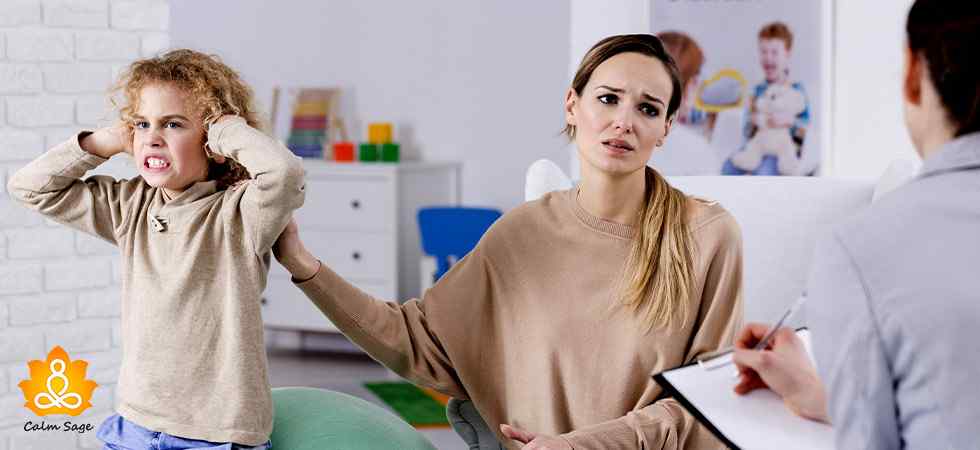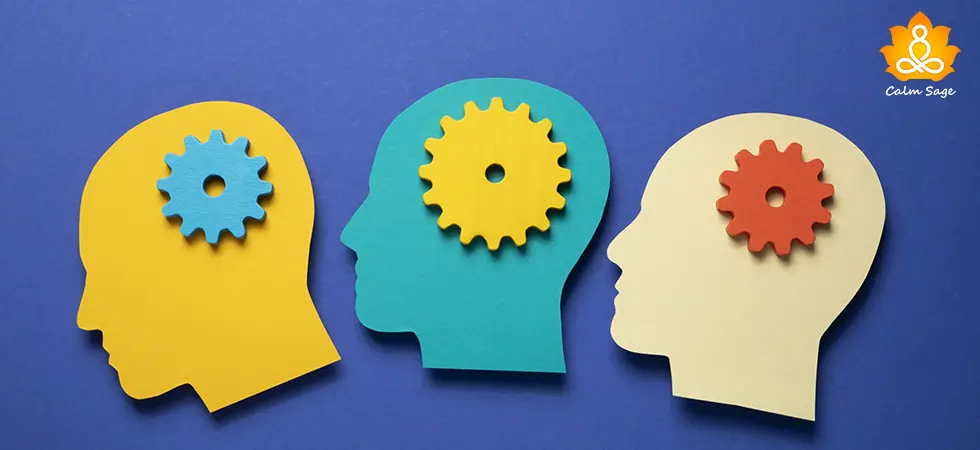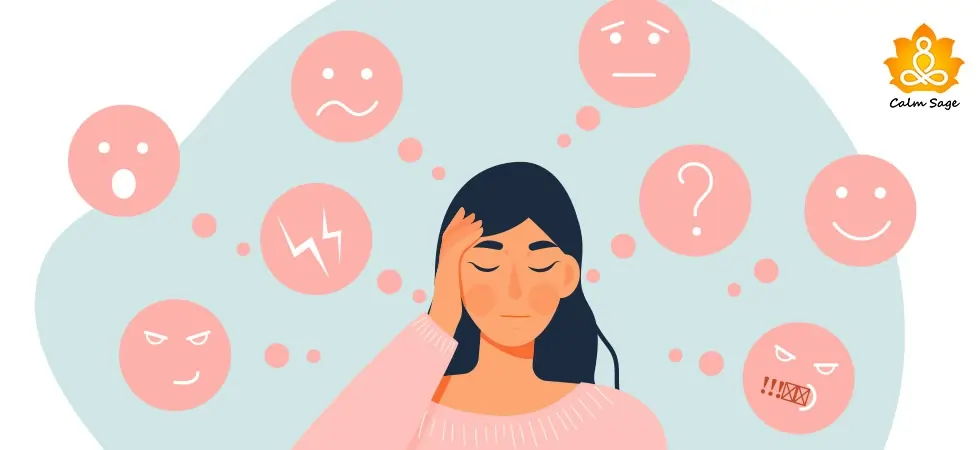Guide-Me: List Of Behavioral Disorders In Children

I am a mother of a 13-month-old; I definitely understand how hard it is to raise a child. Whenever I am able to direct my child in the right direction, I feel at peace. But, whenever something goes wrong, I start being too harsh on myself and my child as well.
I know it’s not the right way to deal with a toddler but when kids start throwing tantrums, we start labelling their behavior unintentionally. Clearly, it’s not their fault but sometimes, it could be a sign of a behavioral disorder in children.
Yes, children can also experience behavioral disorders. Well, let’s get some information about it in the next section…
Defining Behavioral Disorders
According to a Child Psychologist, disorders are cautiously used specifically for children up to 5 years old. Since behavioral issues indicate the signs of a true disorder, it can be possible for a child to develop a behavioral disorder.
According to the research, a child under the age of 5 rarely gets a diagnosis of a behavioral disorder. However, they might be showing symptoms of behavioral disorders that can be diagnosed later in childhood.
What is Behavioral Disorder in children?
The behavioral disorder is present in children when they continuously and disruptively show negative behaviors. Such behaviors must last for more than six months. Behavioral disorders affect children’s social life, academic life, and personal life. Hyperactivity, inattention, defiance, impulsivity, and delinquency are some of the signs of a behavioral disorder.
Below are some of the common behavioral disorders in children:
- Anxiety disorder
- Attention deficit hyperactivity disorder (ADHD)
- Autism spectrum disorder
- Bipolar disorder
- Conduct disorders
- Depression
- Intermittent explosive disorder
- Learning disorders
- Oppositional defiant disorder (ODD)
Many of us have heard of these disorders, but when it comes to the diagnosis in children, some of them can be rare too! Let us read about some of the common behavioral disorders:
Attention Deficit Hyperactivity Disorder (ADHD)
ADHD is one of the common behavioral disorders diagnosed in children. Since it can be developed in childhood; it does not mean that a person can outgrow this disorder. It is a neurodevelopmental disorder whose symptoms can also persist in adulthood. Symptoms of ADHD in children can range from mild to severe.
According to the research, there are three types of ADHD found in children:
- Predominantly hyperactive-impulsive
- Predominantly inattentive
- Combined hyperactive-impulsive and inattentive
Below are some of the common symptoms of ADHD in children:
- Keeps on avoiding tasks that require efforts
- Continuous makes careless mistakes
- Disorganized behavior
- Inability to focus
- Inability to follow instructions
- Frequently loses important things
- Forgetfulness
- Easily distracted
Diagnosis and Treatment of ADHD in Children
Since diagnosis is difficult, you can still find the right support and treatment for your child (academically, emotionally, and socially). In order to get your child diagnosed, you will have to seek perspectives from teachers, parents, friends, and others.
Moving further to treatment, treatment for ADHD in children is multi-faceted and involves behavioral therapy, training, modifications, support, and medications.
To read more about symptoms and treatment, refer to Signs of ADHD in children & their treatment
Conduct Disorder
Conduct disorder means a repetitive pattern of violating rules, rights, and age-appropriate activities. Kids who experience this disorder are often termed as “bad” but unknowingly they are struggling. Certain factors and things put a child at risk of developing such a disorder. Sometimes, neglect, failure, abuse, and trauma might contribute to the development. Below are some of the common symptoms of conduct disorder in children:
- Lying
- Deceitfulness
- Stealing
- Physical aggression
- Destruction of properties and things
- Violations of rules such as skipping school, running away, or breaking curfews
Diagnosis and Treatment of Conduct Disorder in Children
Children experiencing conduct disorder require in-home supports or residential placements to intervene. Moreover, psychotherapy, medication, and behavioral therapy can help children reduce the symptoms of conduct disorder. Early intervention and treatment are the most important things to treat a child with conduct disorder.
Intermittent Explosive Disorder (IED)
IED is an undertreated and understudied mental health disorder found in the youth. It can be characterized as the recurring acts of destruction and violence. Such acts are out of proportion. According to psychology, IED is the only disorder that can also be characterized by impulsive aggression. Below are some of the common symptoms of IED:
- Arguing
- Assaults on animals or people
- Damaging property
- High energy
- Heart palpitations
- Irritability
- Physical shouts
- Shouting
- Tantrums
- Tightness in the chest
- Threats of violence
- Racing thoughts
Diagnosis and Treatment of Intermittent Explosive Disorder
A careful evaluation is needed to diagnose IED in children. It can only be diagnosed through a psychiatric history, the presence of symptoms, and medical history that meets the specific criteria. A child or person should have symptoms (specific aggression) for more than three months to be diagnosed.
Treatment of IED involves the combination of cognitive behavioral therapy (CBT) and medication. People can also take the help of self-coping techniques like
- Relaxation
- Learning to manage stressful situations
- Avoiding drugs
Oppositional Defiant Disorder (ODD)
ODD is defined as continuous disobedience and defiance behavior specifically towards higher authorities. ODD can be developed during toddlerhood or adolescent years. It can only be diagnosed or seen when the behaviors become frequent, extreme, and hostile. Below are some of the common symptoms of ODD:
- Frequent arguing or shouting
- Frequent tantrums
- Annoying behavior
- Refusing to follow rules
- Always cross-questioning
- Blaming others
- Easily angered or frequently aggressive
- Behaving in a negative manner
Diagnosis and Treatment of Oppositional Defiant Disorder (ODD)
ODD is often related to other behavioral disorders. Therefore, it is really important to seek proper intervention, early diagnosis, and treatment for ODD in children. In order to diagnose, a professional may complete a comprehensive evaluation to overlook the co-existing disorders.
Coming to treatment, parents or caregivers play an important role. They can help with training the child properly. With the help of individual and family therapy along with medications are essential components of treating ODD. Medications are generally prescribed to control specific symptoms.
Parenting Styles for Handling a Child with Negative Behavior
Some parenting styles are often considered a reason for the development of behavioral disorders in children. Since parents or caregivers play an important role in diagnosing and treating behavioral issues, it is really important to learn about the parenting styles that can help in finding the balance and raising well-behaved children:
Out of all parenting styles, authoritative parenting can help parents raise a happy and well-mannered child. Uninvolved parenting may result in problems like a lack of self-control, self-esteem, and more.
Therefore, decide wisely! To learn about more positive parenting styles, refer to
Quick Giveaway: Tips to Raise a Happy Child
Early diagnosis and proper management of behavioral disorders in children is very important as they help in fulfilling your child’s emotional, physical, and social needs.
Although there are different treatment approaches and all treatment approaches depend on the severity and type of the disorder, some tips could really help to raise a happy, well-mannered, or well-behaved child:
1. Learn about parent management: If you’re a parent or a caregiver, you can seek parent management training which helps you learn deeply about the child’s behavior and help you learn more effective ways to raise a happy and calm child. Not only this, but it also helps in setting rules and boundaries.
2. Seek family or individual therapy: You can also seek individual or family therapy to learn techniques for managing your emotions and responding positively to stressful or emotional situations.
3. Seek help from social or school-based programs: These programs can help raisea child in a healthy and positive manner. These programs conduct a webinar or seminar to help increase the child and parent
4. Support your child’s difficulties: Professional support not only helps raiseyour child the calmer way but also helps in supporting your child’s disabilities or difficulties. This approach helps them in becoming better at social, academic, and personal life.
5. Provide prescribed medication on time: If medications are already prescribed, do not miss them and provide them on time. Always remember that medications do not help in curing the disorder but it helps in managing the symptoms. Therefore, seek therapy and provide the right support to your children.
To connect with a mental health professional, click Below:
I hope this blog helps you understand the common types of behavioral disorders in children. Comment down and share your views on the same. For more such content, connect with us on all social media platforms.
Thanks for reading!




















